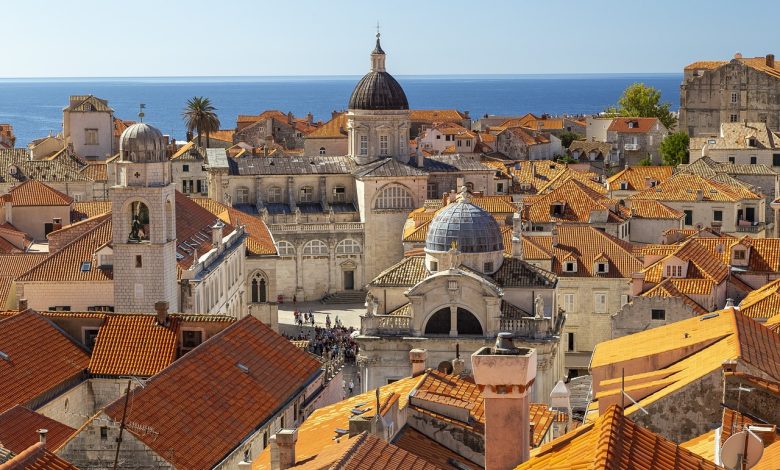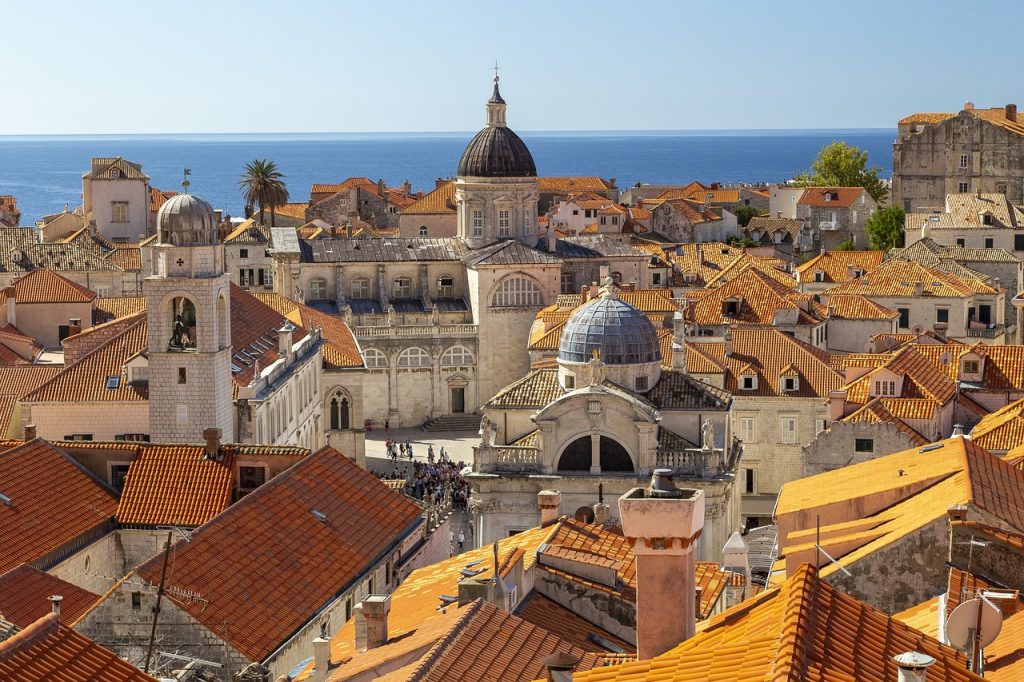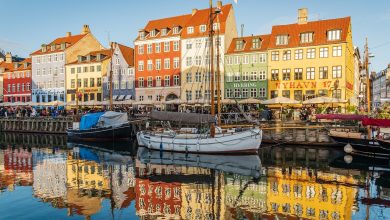Croatia Travel Guide 2024: Itineraries, Top Places, and Beaches


Introduction
Welcome to Croatia, a stunning gem in southeastern Europe that boasts a rich cultural heritage, breathtaking landscapes, and a pristine coastline along the Adriatic Sea. As we dive into 2024, there’s never been a better time to explore this diverse and enchanting country. Whether you’re a history buff, a beach lover, or an adventure seeker, Croatia has something to offer for everyone.
Getting to Croatia
Best Time to Visit
Croatia’s Mediterranean climate means you’ll enjoy warm summers and mild winters. The best time to visit is between May and October, with July and August being the peak tourist months. For a more relaxed experience with pleasant weather, consider visiting in May, June, or September.
Entry Requirements
Travelers from the EU, the US, Canada, Australia, and many other countries can enter Croatia visa-free for up to 90 days within a 180-day period. Ensure your passport is valid for at least three months beyond your stay.
Transportation Options
Croatia is well-connected by air, with major airports in Zagreb, Dubrovnik, Split, and Zadar. Once in the country, you can explore by train, bus, or car. Ferries and catamarans are popular for island hopping.
Top Cities to Visit
Zagreb
The capital city of Croatia, Zagreb, is a blend of history, culture, and modernity. Wander through the cobbled streets of the Upper Town (Gornji Grad) and visit the iconic St. Mark’s Church. Don’t miss the Museum of Broken Relationships and the bustling Dolac Market.
Dubrovnik
Known as the “Pearl of the Adriatic,” Dubrovnik’s Old Town is a UNESCO World Heritage site. Walk the ancient city walls, explore the Rector’s Palace, and immerse yourself in the scenes of “Game of Thrones.” Banje Beach offers a stunning coastal backdrop to the city’s historical charm.
Split
Split’s heart is the Diocletian’s Palace, a Roman emperor’s retirement home turned vibrant urban center. Stroll along the Riva waterfront, visit the Cathedral of Saint Domnius, and enjoy the lively atmosphere of Marjan Hill.
Rovinj
Rovinj is a picturesque coastal town with narrow streets, colorful houses, and a rich history. Climb the bell tower of St. Euphemia’s Church for panoramic views, and explore the local art scene and galleries.
Zadar
Zadar is a city of ancient ruins and modern attractions. Witness the unique Sea Organ and Sun Salutation, explore Roman and Venetian ruins, and enjoy the sunset that Alfred Hitchcock once described as the most beautiful in the world.
Beautiful Islands
Hvar
Hvar is known for its vibrant nightlife, beautiful beaches, and historic sites. Visit the impressive Hvar Fortress, relax on the Pakleni Islands, and experience the local wine and lavender fields.
Korčula
Korčula, the birthplace of Marco Polo, offers a mix of history and natural beauty. Wander the medieval streets of Korčula Town, explore vineyards and olive groves, and enjoy the island’s sandy beaches.
Brac
Brac is home to the famous Zlatni Rat (Golden Horn) beach, a top destination for windsurfing and kiteboarding. The island also offers hiking, biking, and exploring charming villages like Bol and Supetar.
Mljet
Mljet is a paradise for nature lovers, with a national park covering much of the island. Visit the saltwater lakes, hike through pine forests, and relax in the tranquility of this less crowded destination.
Top Beaches
Zlatni Rat Beach, Brac
This iconic beach changes shape with the tides, currents, and wind, creating a unique and ever-changing landscape.
Banje Beach, Dubrovnik
Located just outside Dubrovnik’s Old Town, Banje Beach offers clear waters and stunning views of the city walls.
Sveti Jakov Beach, Dubrovnik
A bit more secluded, Sveti Jakov Beach is perfect for those looking to escape the crowds and enjoy a peaceful day by the sea.
Stiniva Beach, Vis
Accessible only by boat or a challenging hike, Stiniva Beach is a hidden gem with crystal-clear waters surrounded by cliffs.
Punta Rata, Brela
Often ranked among the best beaches in Europe, Punta Rata boasts fine pebbles, turquoise waters, and a backdrop of pine trees.
Sakarun Beach, Dugi Otok
Known for its white sand and shallow waters, Sakarun Beach is ideal for families and those seeking a serene beach experience.
Natural Wonders
Plitvice Lakes National Park
A UNESCO World Heritage site, Plitvice Lakes is a wonderland of cascading lakes and waterfalls, connected by wooden walkways.
Krka National Park
Krka offers stunning waterfalls, swimming areas, and historic sites like the Krka Monastery and Visovac Island.
Paklenica National Park
Paklenica is a haven for hikers and climbers, with dramatic canyons, lush forests, and diverse wildlife.
Adventure Activities
Hiking and Biking Trails
Croatia offers numerous trails, from coastal paths to mountainous terrain, catering to all levels of hikers and bikers.
Water Sports and Sailing
The Adriatic Sea is perfect for sailing, windsurfing, kayaking, and diving. The crystal-clear waters and rich marine life make it a paradise for water enthusiasts.
Rock Climbing and Caving
Explore the dramatic cliffs and caves, especially in areas like Paklenica and the islands of Cres and Pag, known for their unique rock formations.
Cultural Experiences
Traditional Croatian Cuisine
Sample local dishes like Peka (meat or seafood cooked under a bell-like lid), Black Risotto, and pastries like Fritule. Don’t forget to try the local wines and olive oils.
Festivals and Events
Experience the vibrant culture through festivals like the Dubrovnik Summer Festival, Split’s Ultra Europe, and the Sinj Alka, a traditional knight’s tournament.
Local Markets and Handicrafts
Visit local markets for fresh produce, handmade crafts, and souvenirs. Look for lace from Pag, wooden toys from Zagorje, and ceramics from various regions.
Accommodations
Luxury Hotels
Croatia offers numerous luxury hotels, from five-star resorts in Dubrovnik and Split to exclusive island retreats.
Boutique Hotels
For a more personalized experience, stay
at one of Croatia’s charming boutique hotels. These often blend historic architecture with modern amenities, providing a unique and intimate stay.
Budget-Friendly Options
Travelers on a budget can find plenty of hostels, guesthouses, and budget hotels throughout Croatia. Cities like Zagreb, Split, and Dubrovnik have numerous affordable options.
Unique Stays
For a truly memorable experience, consider staying in a lighthouse, a rural villa, or even a traditional stone house in a small village. These unique accommodations offer a glimpse into Croatia’s heritage and natural beauty.
Itineraries
7-Day Itinerary
- Day 1-2: Zagreb
- Explore the Upper Town, visit the Museum of Broken Relationships, and relax at Maksimir Park.
- Day 3-4: Plitvice Lakes and Zadar
- Spend a day at Plitvice Lakes National Park, then head to Zadar to experience the Sea Organ and Sun Salutation.
- Day 5-6: Split
- Discover Diocletian’s Palace, hike Marjan Hill, and take a day trip to Trogir.
- Day 7: Dubrovnik
- Walk the city walls, explore the Old Town, and enjoy a sunset at Banje Beach.
14-Day Itinerary
- Day 1-2: Zagreb
- Similar to the 7-day itinerary.
- Day 3-4: Plitvice Lakes and Zadar
- Similar to the 7-day itinerary.
- Day 5-7: Split and Hvar
- Spend more time in Split, then take a ferry to Hvar for nightlife and beach relaxation.
- Day 8-9: Korčula
- Explore Korčula Town, visit local vineyards, and relax on sandy beaches.
- Day 10-12: Dubrovnik
- Similar to the 7-day itinerary but with an extra day for a day trip to Lokrum Island or the Elafiti Islands.
- Day 13-14: Montenegro (Optional Extension)
- Consider a day trip to Montenegro to explore Kotor and the Bay of Kotor.
Weekend Getaways
- Dubrovnik
- Perfect for a quick escape. Spend your time exploring the Old Town, walking the city walls, and enjoying local cuisine.
- Istria Peninsula
- Visit Rovinj, Pula, and Motovun. Enjoy wine tasting and truffle hunting.
- Krka National Park
- Combine a visit to Šibenik with a day exploring Krka’s waterfalls and historical sites.
Travel Tips
Language and Communication
While Croatian is the official language, English is widely spoken in tourist areas. Learning a few basic phrases in Croatian can enhance your experience and endear you to locals.
Currency and Budgeting
The official currency is the Croatian Kuna (HRK). Credit cards are widely accepted, but it’s a good idea to have some cash for smaller towns and markets. Croatia is generally affordable, but costs can rise in tourist hotspots like Dubrovnik and Hvar.
Health and Safety
Croatia is a safe country for travelers. Health care is of a high standard, and pharmacies are readily available. Always have travel insurance, stay hydrated, and protect yourself from the sun, especially in the summer months.
Sustainable Travel
Eco-Friendly Practices
Respect the environment by reducing waste, recycling, and using reusable water bottles. Choose eco-friendly accommodations and tours that prioritize sustainability.
Supporting Local Communities
Buy local products, eat at family-owned restaurants, and participate in community-based tourism activities. This helps support the local economy and preserves cultural heritage.
Responsible Tourism
Follow the “Leave No Trace” principles: take only pictures, leave only footprints. Respect wildlife, stay on marked trails, and avoid disturbing natural habitats.
Conclusion
Croatia is a land of contrasts and wonders, offering everything from historic cities and cultural treasures to pristine beaches and breathtaking natural parks. Whether you’re planning a short getaway or an extended adventure, this guide provides all the information you need to make the most of your trip in 2024. So pack your bags, prepare for an unforgettable journey, and immerse yourself in the beauty and charm of Croatia.
FAQs
What is the best time of year to visit Croatia?
The best time to visit Croatia is between May and October, with the peak tourist season in July and August. For a more relaxed experience, visit in May, June, or September.
How many days do you need to explore Croatia?
For a comprehensive experience, plan for at least 10-14 days. This allows you to visit major cities, explore several islands, and enjoy both cultural and natural attractions.
Is Croatia expensive for travelers?
Croatia is generally affordable, but prices can be higher in popular tourist destinations like Dubrovnik and Hvar. Budget travelers can find plenty of options for accommodation and dining.
What are the must-try dishes in Croatia?
Try local dishes like Peka, Black Risotto, and pastries like Fritule. Also, sample local wines, olive oils, and seafood.
Do I need to rent a car to get around Croatia?
Renting a car is convenient, especially for exploring rural areas and islands. However, Croatia has an excellent public transportation system, including buses, ferries, and trains, which are suitable for most travelers.



